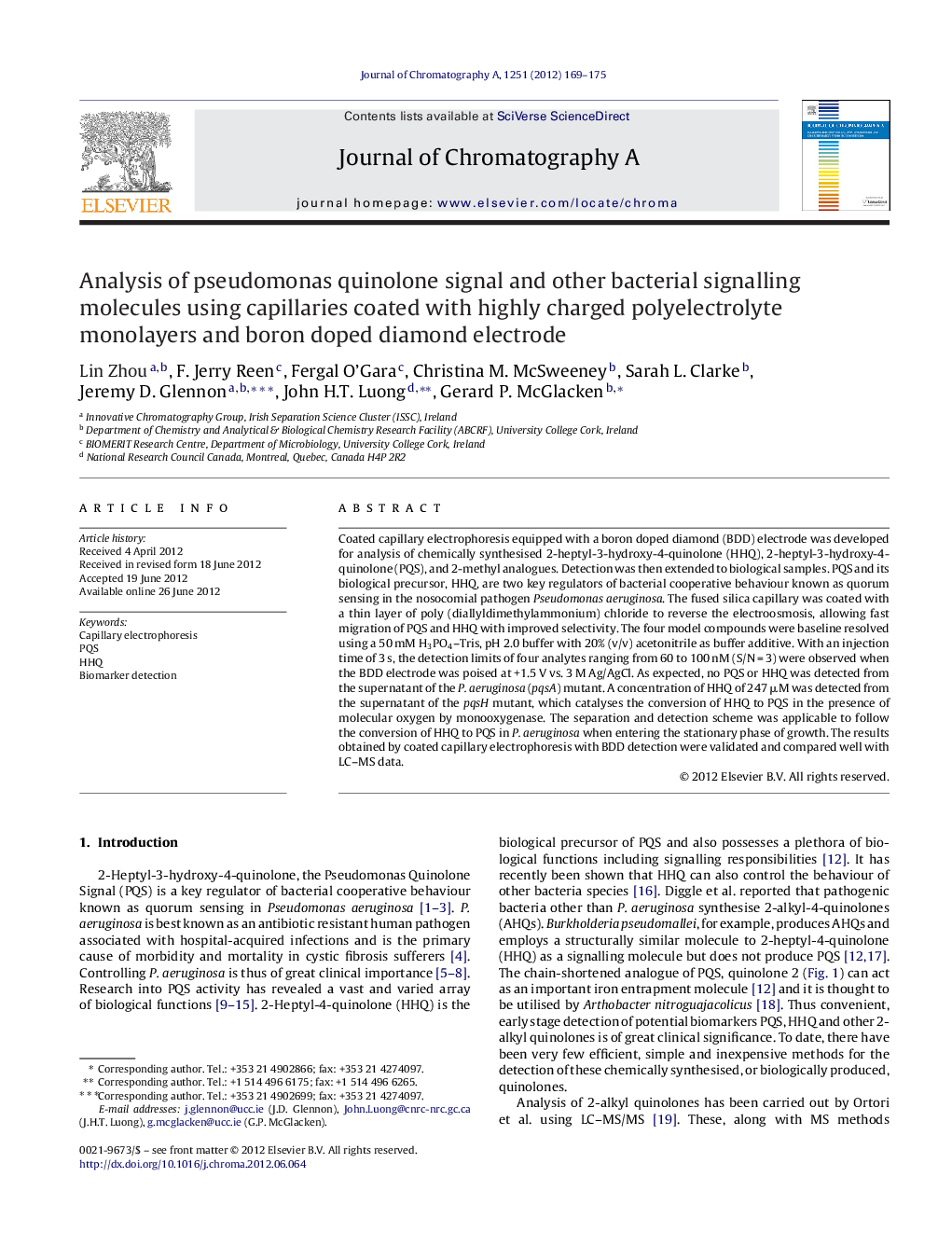| کد مقاله | کد نشریه | سال انتشار | مقاله انگلیسی | نسخه تمام متن |
|---|---|---|---|---|
| 1202399 | 1493674 | 2012 | 7 صفحه PDF | دانلود رایگان |

Coated capillary electrophoresis equipped with a boron doped diamond (BDD) electrode was developed for analysis of chemically synthesised 2-heptyl-3-hydroxy-4-quinolone (HHQ), 2-heptyl-3-hydroxy-4-quinolone (PQS), and 2-methyl analogues. Detection was then extended to biological samples. PQS and its biological precursor, HHQ, are two key regulators of bacterial cooperative behaviour known as quorum sensing in the nosocomial pathogen Pseudomonas aeruginosa. The fused silica capillary was coated with a thin layer of poly (diallyldimethylammonium) chloride to reverse the electroosmosis, allowing fast migration of PQS and HHQ with improved selectivity. The four model compounds were baseline resolved using a 50 mM H3PO4–Tris, pH 2.0 buffer with 20% (v/v) acetonitrile as buffer additive. With an injection time of 3 s, the detection limits of four analytes ranging from 60 to 100 nM (S/N = 3) were observed when the BDD electrode was poised at +1.5 V vs. 3 M Ag/AgCl. As expected, no PQS or HHQ was detected from the supernatant of the P. aeruginosa (pqsA) mutant. A concentration of HHQ of 247 μM was detected from the supernatant of the pqsH mutant, which catalyses the conversion of HHQ to PQS in the presence of molecular oxygen by monooxygenase. The separation and detection scheme was applicable to follow the conversion of HHQ to PQS in P. aeruginosa when entering the stationary phase of growth. The results obtained by coated capillary electrophoresis with BDD detection were validated and compared well with LC–MS data.
► Convenient, early stage detection of potential biomarkers is of clinical significance.
► CE with electrochemical detection is used to separate and quantify key signalling molecules.
► New approach using a PDDA coated capillary coupled to a BDD electrode.
► Technique is capable of separating a number of potential P. aeruginosa biomarkers.
► Detection limit was below normal physiological levels in sputum samples of CF patients.
Journal: Journal of Chromatography A - Volume 1251, 17 August 2012, Pages 169–175